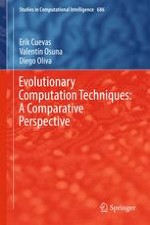2017 | OriginalPaper | Buchkapitel
4. Template Matching
verfasst von : Erik Cuevas, Valentín Osuna, Diego Oliva
Erschienen in: Evolutionary Computation Techniques: A Comparative Perspective
Aktivieren Sie unsere intelligente Suche, um passende Fachinhalte oder Patente zu finden.
Wählen Sie Textabschnitte aus um mit Künstlicher Intelligenz passenden Patente zu finden. powered by
Markieren Sie Textabschnitte, um KI-gestützt weitere passende Inhalte zu finden. powered by
